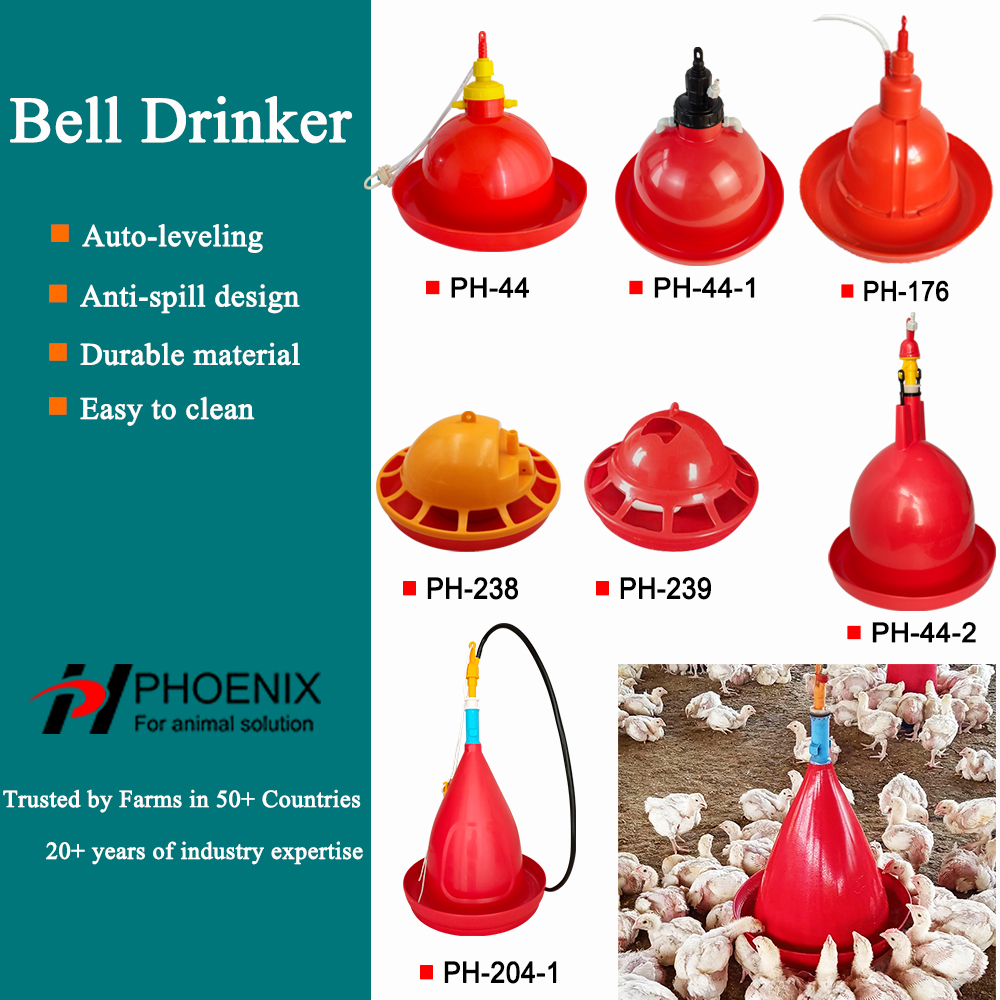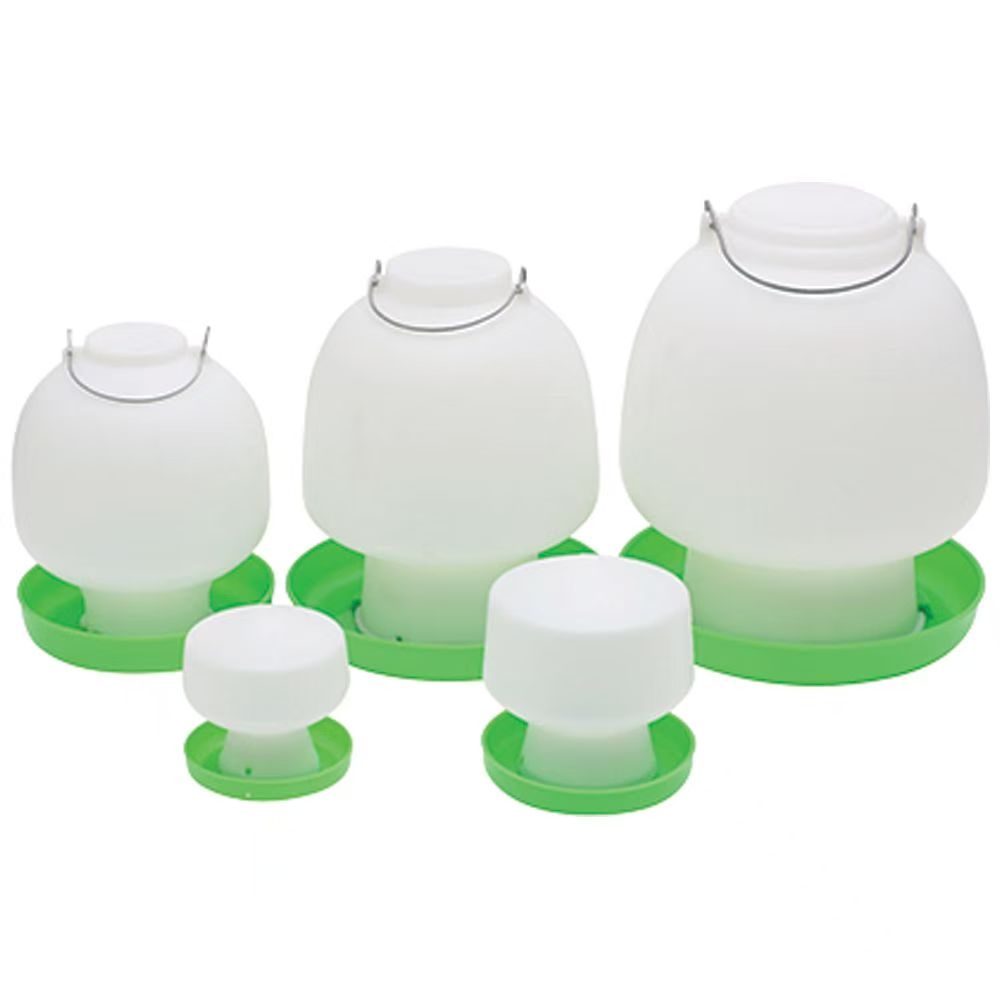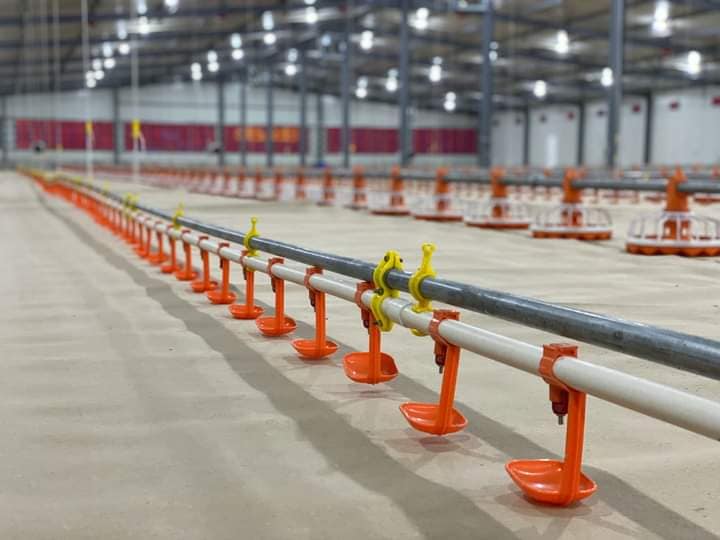News
In modern animal husbandry and poultry farming, the selection of watering equipment significantly impacts animal health and production efficiency. Common types of waterers include nipple drinkers, bell drinkers, and plastic bucket waterers, each with distinct advantages and disadvantages suitable for different farming environments and animal needs. This article provides a detailed analysis of the structure, working principles, pros and cons, and applicable scenarios of these three types of waterers to assist farmers in making informed decisions.

Nipple drinkers are devices that release water when animals activate a valve with their mouths or tongues. Typically made of stainless steel or plastic, they contain an internal spring and sealing mechanism that only releases water upon animal interaction.
Water conservation: On-demand water delivery minimizes waste, making them ideal for water-scarce regions.
Hygienic: Water remains enclosed, reducing contamination from dust, feces, and bacteria, thereby lowering disease risks.
Space-efficient: Suitable for high-density farming (e.g., caged poultry or pigs).
Automation-friendly: Compatible with automated water systems, reducing labor requirements.
Learning curve: Young or newly introduced animals may struggle to adapt, potentially leading to dehydration.
Clogging risk: Poor water quality can cause blockages, requiring regular maintenance.
Flow rate limitations: May not meet the water demands of large animals (e.g., cattle).
Higher initial cost: More expensive to install and maintain than traditional options.
Poultry (chickens, ducks) in cages or floor systems.
Commercial pig farms.
Laboratory animal facilities.

Bell drinkers (or cup drinkers) consist of an inverted bell-shaped basin and a float valve. The float regulates water levels, and animals drink by licking or nudging the basin’s edge.
Ease of use: Intuitive design requires no training for animals.
Higher water output: Faster flow rate suits large animals (e.g., cattle, sheep).
Low maintenance: Simple structure, easy to clean, and less prone to clogging.
Moderate cost: Balances affordability and functionality.
Contamination risk: Open design allows exposure to dirt, feed residue, and feces.
Water wastage: Spillage and evaporation are common, especially in hot climates.
Space-intensive: Less suitable for high-density setups.
Freezing issues: Exposed water may freeze in cold climates.
Large livestock (cattle, sheep).
Free-range poultry (e.g., backyard chickens, ducks).
Small to medium-sized farms.

The most traditional type, these consist of a plastic bucket with a shallow tray, relying on gravity to supply water. Animals drink directly from the tray.
Low cost: Affordable for small-scale farmers.
Easy installation: No plumbing needed; ideal for free-range or pasture systems.
Small-scale suitability: Fits household or small-animal setups (e.g., rabbits, pigeons).
Poor hygiene: Open design invites contaminants (feces, insects, etc.), increasing disease risk.
High wastage: Animals may spill or tip buckets, leading to significant water loss.
Labor-intensive: Requires frequent manual refilling.
Non-automated: Unsuitable for modern, large-scale operations.
Backyard poultry (chickens, ducks).
Pet or small experimental animals.
Temporary farming setups.
Type | Pros | Cons | Best For |
Hygienic, water-saving, automated | Animal adaptation needed, clogging | Large-scale poultry/pig farms | |
Recommendations:
Large-scale/automated farms: Prioritize nipple drinkers for efficiency and hygiene.
Large livestock: Opt for bell drinkers for higher water output.
Small-scale/household use: Plastic buckets are cost-effective but require diligent water management.
Each waterer type has trade-offs. Farmers should consider animal species, scale, water availability, and budget. Nipple drinkers suit high-density operations, bell drinkers fit large livestock, and plastic buckets serve small setups. Strategic selection enhances animal welfare, reduces costs, and boosts overall productivity.
View More information about chicken farm
View our Youtube More breeding equipment video
Phoenix Breeding Equipment: 19+ years of breeding equipment production and export experience. As a result of our high-quality products and outstanding customer service, we have gained a global sales network reaching Europe, North America, Southeast Asia, Africa, South America, etc. Successfully in use on both family-owned farms and large farm complexes. Providing individual and automatic equipment to feed your livestock: chicken drinking line, chicken feeding line, poultry drinker and feeder, exhaust/ventilation fans, egg Incubator, and so on breeding equipment.
CONTACT US
Phone:+86 19061974162
Email: sales@goldphoenixa.com

Pulished on Apr. 18, 2025